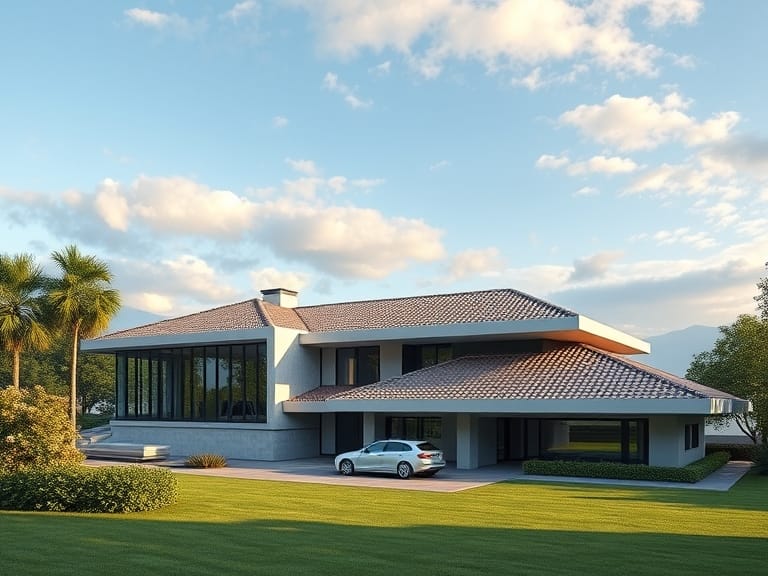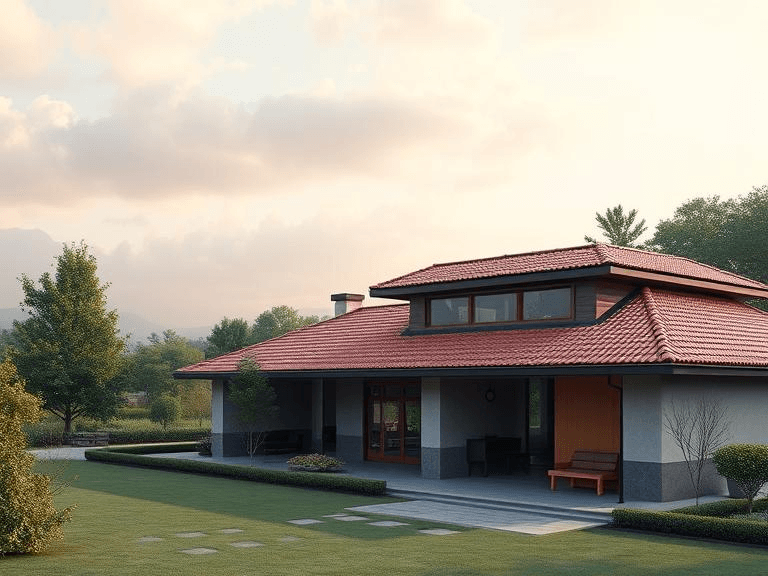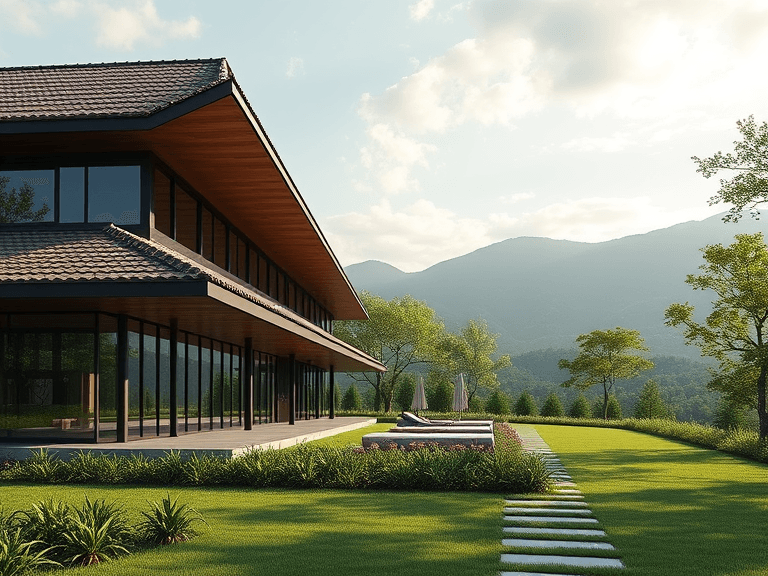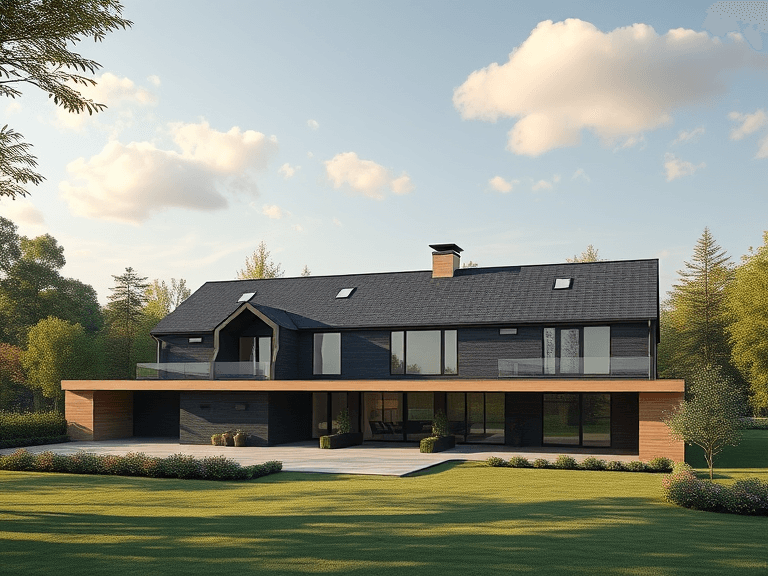
Tile roofing is a distinctive and durable roofing option that has gained popularity in both residential and commercial construction. Typically composed of clay or concrete, tile roofs are renowned for their longevity, aesthetic appeal, and ability to withstand harsh weather conditions. The tiles themselves can be molded into various shapes and colors, allowing homeowners and builders to customize the appearance of their structures effectively. Clay tiles are often praised for their ability to reflect sunlight, while concrete tiles offer the benefit of lower initial costs with a similar aesthetic.
There are several types of tile roofing available, with the two primary categories being clay tiles and concrete tiles. Clay tiles, which have been used for centuries, are fired at high temperatures to achieve their unique texture and color. This process not only enhances their visual appeal but also contributes to their durability. On the other hand, concrete tiles offer a more economical choice while still providing a similar look to clay. They are often reinforced for added strength and are available in a wider variety of designs.
Tile roofing is frequently utilized in areas with extreme weather conditions, as it is resistant to strong winds, rain, and even fire. Additionally, the material is non-combustible, making it a favorable option for regions prone to wildfires. In residential settings, tile roofing adds significant curb appeal and can increase the overall value of a property. On the commercial side, buildings that incorporate tile roofs benefit from their energy efficiency, as the material helps regulate indoor temperatures, potentially reducing cooling costs.
Benefits of Tile Roofing
Tile roofing is a popular choice among homeowners due to its myriad advantages. One of the primary benefits is its longevity; tile roofs can last anywhere from 50 to over 100 years. This impressive lifespan significantly reduces the need for frequent replacements, thereby saving homeowners money in the long run. The durability of tile roofing is another crucial aspect; it is resistant to extreme weather conditions, such as heavy rain, strong winds, and even hail. This resilience ensures that the roof remains intact while providing reliable protection for the home.
Energy efficiency is yet another advantage associated with installing tile roofing. The design and material properties of tiles provide natural insulation, leading to lower energy consumption for heating and cooling. Homeowners often find that their energy bills decrease, contributing to both financial savings and environmental benefits. Additionally, many tile roofing options are available in reflective materials that can reduce heat absorption, making homes more comfortable during hot months.
Aesthetic appeal is also a significant factor when considering tile roofing. Available in various styles, colors, and textures, tiles can enhance the architectural beauty of a home, making it stand out in the neighborhood. The versatility in design allows homeowners to choose tiles that complement their personal taste and the overall look of their property. Moreover, tile roofs can increase the home’s resale value, as prospective buyers often view them as a valuable feature.
Low maintenance requirements further endorse the advantages of installing tile roofing. Unlike other roofing materials that may require regular upkeep or replacement, tile roofs demand minimal attention. Routine inspections and cleaning are generally sufficient to maintain their integrity, which is appealing for those seeking a hassle-free solution over time. All these factors combined make tile roofing a compelling option for many homeowners.
Longevity and Durability of Tile Roofing
Tile roofing is renowned for its impressive longevity and durability, often surpassing many other roofing materials in lifespan. Statistically, clay and concrete tiles can last anywhere from 50 to 100 years or more when installed properly and maintained appropriately. This longevity stands in stark contrast to traditional asphalt shingles, which typically require replacement every 20 to 30 years. Thus, when considering the advantages and disadvantages of installing tile roofing, the extended lifespan is a significant benefit that appeals to many homeowners.
Furthermore, tile roofs are exceptionally resilient to various weather conditions. Their heavy weight and low porosity contribute to their natural resistance to strong winds, heavy snowfall, and intense rain. For instance, tile roofs can withstand winds of up to 150 miles per hour, making them an excellent choice for regions prone to hurricanes or storms. In comparison, other roofing materials may not withstand such extreme weather, leading to costly repairs or replacements.
Additionally, tile roofing performs remarkably well under extreme temperatures. It reflects sunlight, helping to keep homes cooler in hot climates, which can also lead to energy savings. Conversely, in cold climates, its durability plays a vital role in preventing issues such as ice dams and leaks caused by melting snow refreezing. The advantages of installing tile roofing in terms of heat resistance make it an ideal choice for various geographical regions.
Moreover, tile roofs are resistant to common problems such as rot, pests, and mold. This resistance not only contributes to their longevity but also reduces maintenance requirements over the years. Ultimately, while the initial investment in tile roofing may be higher than that of other materials, the long-term benefits in durability and lifespan can yield considerable savings, thereby solidifying tile as a robust roofing solution for any homeowner.
Energy Efficiency and Cost Savings
Tile roofing is widely recognized for its energy efficiency, which can significantly contribute to cost savings for homeowners. The insulation properties of tile roofs play a crucial role in maintaining indoor temperatures, thereby reducing the reliance on heating and cooling systems. The composition of tile materials helps regulate temperature by minimizing heat transfer, which enables homes to remain cooler in the summer and warmer in the winter. This feature not only enhances the overall comfort of living spaces but also leads to lower energy consumption throughout the year.
Another distinctive advantage of tile roofing is its ability to reflect solar heat. Unlike conventional roofing materials, tile roofs can reflect sunlight effectively, minimizing heat absorption. This reflection is particularly beneficial in warmer climates, where excessive heat can lead to increased energy expenditure for air conditioning. By investing in a reflective tile roofing system, homeowners may observe a reduction in their cooling costs, translating to substantial long-term financial savings. Furthermore, the lighter colors often available in tile options are especially advantageous, as they can further enhance heat reflection.
In terms of cost savings, tile roofing requires minimal maintenance compared to other roofing materials. With a lifespan that often exceeds 50 years, homeowners are less likely to incur frequent repair costs associated with roof deterioration. Moreover, the durability of tile roofs means fewer replacements over time, contributing to overall savings. While tile roofing systems may initially require a higher investment, the long-term benefits in energy efficiency and reduced utility bills can make them a wise financial decision. Overall, considering the advantages and disadvantages of installing tile roofing reveals its capacity to enhance energy efficiency, leading to noteworthy cost savings for homeowners over time.

Aesthetic Appeal and Design Versatility
Tile roofing is widely recognized for its aesthetic appeal and design versatility, making it a favored choice among homeowners and architects alike. One of the primary advantages of installing tile roofing is the extensive range of styles, colors, and textures that are available. From traditional Mediterranean to contemporary designs, tile roofs can easily complement various architectural styles. This broad selection allows homeowners to select roofing that harmonizes with the overall look of their property, enhancing its curb appeal.
The variety of materials used in tile roofing, such as ceramic, concrete, and slate, further contributes to its visual attractiveness. Each type offers unique characteristics; for instance, clay tiles often feature a warm, earthy palette, while concrete tiles can mimic the appearance of more expensive materials at a fraction of the cost. This flexibility means homeowners can achieve a sophisticated look without compromising on their budget.
Moreover, tile roofing is often associated with increased market value. Properties that feature high-quality tile roofs tend to stand out in real estate listings, attracting potential buyers. The durability and longevity of tile roofs often appeal to buyers, as the aesthetic qualities do not degrade significantly over time. Given their resistance to weather and other environmental elements, tile roofing can maintain its beauty for decades, ensuring that both the aesthetic appeal and overall market value of a property remain intact.
In conclusion, the aesthetic advantages of installing tile roofing are significant and multifaceted. With a diverse array of styles and colors available, tile roofing not only enhances the visual appeal of any property but also serves as an investment that can yield positive returns in market value.
Drawbacks of Tile Roofing
While tile roofing offers several benefits, it is essential to consider its drawbacks before committing to this roofing option. One of the primary concerns is the weight of tile materials, which are significantly heavier than traditional asphalt shingles or other roofing types. This added weight may require additional structural support, particularly in older homes that may not be designed to accommodate such loads. Homeowners should consult with a structural engineer to assess their property’s suitability for tile roofing.
Installation of tile roofing can also present challenges. The process is typically more complicated compared to other roofing materials due to the need for precise alignment and the specific techniques used to secure tiles in place. This complexity demands skilled labor, which may not be readily available in all areas. Consequently, homeowners might face scheduling delays or increased labor costs in the installation phase.
Another concern relates to the upfront costs associated with tile roofing. The price per square foot is generally higher than that of other roofing options, resulting in a significant initial investment. This can be a deterrent for budget-conscious homeowners. However, it is important to note that while the upfront costs are high, tile roofs can offer longevity, potentially balancing the investment over time.
Homeowners should also be aware of the potential for tile cracking, particularly in areas prone to extreme weather conditions or seismic activity. Although tiles are durable, they can crack or break under pressure, leading to costly repairs. Furthermore, if a tile does crack, it may require the replacement of multiple tiles to maintain a uniform appearance, adding to repair expenses.
In summary, while tile roofing has several benefits, it is crucial for homeowners to weigh these disadvantages carefully. Understanding the drawbacks, including weight limitations, installation challenges, upfront costs, potential for cracking, and repair needs, can equip homeowners for making a well-informed decision about their roofing options.
Installation Challenges and Costs
Tile roofing is a popular choice among homeowners due to its aesthetic appeal and durability. However, the advantages come with certain challenges and costs that should be considered before installation. First and foremost, tile roofing requires professional installation. This ensures that the tiles are properly fitted and secured, as improper installation can lead to leaks and structural issues. The complexities associated with working with tiles, particularly in terms of weight distribution and alignment, necessitate skilled craftsmanship and knowledge of roofing techniques. Consequently, engaging a qualified contractor can increase overall expenses.
Furthermore, the costs involved in installing tile roofing are generally higher than those of more traditional roofing materials. The price of tiles varies significantly depending on the type—ceramic, concrete, or clay—which influences material costs. Additionally, labor costs can escalate due to the specialized skills required for installation. Homeowners must also factor in the necessary renovations to support the weight of the roofing tiles, particularly for homes with standard roofing structures. A reinforced roof can lead to added expenses yet is essential in ensuring the longevity and effectiveness of the roofing system.
Another critical consideration is the roof slope. Tile roofs typically require a minimum slope to ensure proper water drainage and prevent water pooling, which could lead to damage over time. Homes with low-slope roofing may not be suitable for tile roofing without significant modifications. This can further add to installation costs and operational challenges. When weighing the advantages and disadvantages of installing tile roofing, it becomes clear that careful planning and assessment of these factors are essential for a successful installation.
Geographical Considerations for Tile Roofing
The practicality of tile roofing is significantly influenced by geographical factors, including climate conditions, local building codes, and regional architectural styles. Tiles are renowned for their durability and longevity, yet their performance can vary greatly depending on the environment in which they are installed. In areas characterized by a warm, dry climate, such as the Mediterranean or Southwest United States, tile roofing tends to excel. The inherent properties of clay or concrete tiles allow them to effectively reflect solar radiation, keeping buildings cooler and enhancing energy efficiency.
Conversely, tile roofs may present challenges in regions susceptible to heavy snowfall or extreme temperatures. In colder climates, ice and snow accumulation can lead to potential issues such as ice damming or increased weight stress on the structure. Many experts recommend assessing both the design of the tile roof and the materials used based on these conditions to mitigate any risks associated with snow load. Additionally, local building codes may impose restrictions or guidelines on the types of roofing materials that can be utilized, particularly in areas prone to hurricanes or high wind conditions, where lightweight tiles may be less suitable.
It is also crucial to consider the suitability of tile roofing in relation to local architectural styles. Certain regions may favor specific aesthetic appearances, meaning that tile roofs might not always align with the predominant visual characteristics of the neighborhood. Understanding these geographical considerations is essential for homeowners contemplating the advantages and disadvantages of installing tile roofing. In this way, prospective buyers can ensure their choice of roofing not only stands up to the elements but also harmonizes with the local architectural vernacular, contributing positively to both the individual property and the community as a whole.
Conclusion: Is Tile Roofing Right for You?
In considering tile roofing for your home, it is important to thoroughly evaluate both the advantages and disadvantages of installing tile roofing. This type of roofing is well-regarded for its durability, aesthetic appeal, and energy efficiency. Tile roofs can withstand harsh weather conditions, resist rot and insects, and have a lifespan that can exceed fifty years with proper maintenance. Additionally, their thermal properties can improve energy efficiency, offering potential savings on heating and cooling costs.
However, tile roofing is not without its challenges. The weight of tile materials can necessitate additional structural support, making installation more complex and potentially more costly. Moreover, the initial investment for tile roofing is generally higher than that of traditional roofing options, such as asphalt shingles. It is essential to consider whether this upfront cost aligns with your budget and financial goals.
Another factor to weigh is the style of your home and the climate in which you reside. Tile roofing comes in various styles and colors, making it a versatile choice that can enhance curb appeal. However, the adaptable qualities of tile roofing may not be optimized in regions that experience extreme weather fluctuations, which could lead to increased maintenance and repair costs over time.
Ultimately, the decision about whether tile roofing is suitable for you should balance these various factors against your personal preferences and the specific needs of your property. By taking into account the advantages and disadvantages of installing tile roofing in relation to your situation, you can make an informed decision that aligns with your priorities, ensuring that your investment serves your home well for many years to come.


